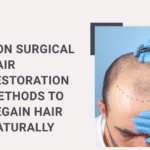Many people struggle with unsightly or painful varicose veins and wonder: Are cosmetic vein treatments ever covered by health plans? The answer isn’t always straightforward. Insurance companies often draw a fine line between what is considered medically necessary and what is purely cosmetic. If you’re researching treatment options, you may also be asking, are varicose veins covered by insurance?—a question that depends largely on your symptoms, diagnosis, and insurance provider.
Whether you’re dealing with bulging varicose veins or smaller spider veins, understanding how coverage works is essential before visiting a vein treatment clinic. In this guide, we’ll explore when insurance might pay for your procedure, what conditions are covered, and how you can work with your clinic to make the process easier and more affordable.
How Do Insurance Providers Define Medical Necessity?
Subheading: When Vein Problems Go Beyond Cosmetic Concerns
Most insurance companies will only cover treatments deemed medically necessary. This means the vein issue must be causing significant symptoms that impact daily life. Common qualifying symptoms include:
- Chronic leg pain or heaviness
- Swelling (edema) in the legs or ankles
- Skin changes like rashes or ulcers
- Bleeding from veins
- Blood clots or thrombophlebitis
If you are experiencing one or more of these symptoms, a vein treatment clinic may be able to help document your condition in a way that supports insurance approval.
When your vein issues cause discomfort, limit mobility, or threaten your health, insurers are more likely to approve coverage. On the other hand, if you’re seeking treatment only to improve appearance—such as for small spider veins with no symptoms—coverage is usually denied.
Are Varicose Veins Covered by Insurance?
Subheading: Breaking Down What Most Policies Will and Won’t Pay For
The answer to are varicose veins covered by insurance depends on several factors. In many cases, yes—especially when symptoms align with medical necessity. Here’s how typical plans handle different procedures:
✅ Covered Treatments (if medically necessary):
- Duplex ultrasound to assess vein function
- Endovenous laser treatment (EVLT)
- Radiofrequency ablation (RFA)
- Sclerotherapy (only in some cases)
- Vein stripping or surgical removal
❌ Not Covered (considered cosmetic):
- Sclerotherapy for spider veins without symptoms
- Laser treatment for appearance only
- Preventive or aesthetic-only consultations
Always check with your specific plan and have your vein treatment clinic assist in pre-authorization.
What Documentation Do You Need for Insurance Approval?
Subheading: How to Improve Your Chances of Getting Coverage
To improve the likelihood that your health plan will cover your vein treatment, you must have proper medical documentation. Most insurers will require the following:
- A full physical examination
- A diagnostic ultrasound showing vein reflux or malfunction
- A history of symptoms, documented over time
- Evidence of conservative treatment (e.g., compression stockings, leg elevation)
- Physician notes supporting the need for intervention
Your vein treatment clinic plays a key role here. Experienced clinics are well-versed in insurance guidelines and can help submit claims with the right clinical terminology and coding.
Can You Appeal a Denied Claim?
Subheading: What to Do If Your Coverage Is Rejected
Even if your insurance provider initially denies your claim, all hope is not lost. You can file an appeal. This is a formal request for your insurer to review and reconsider their decision. A strong appeal includes:
- A detailed letter from your physician explaining why the procedure is medically necessary
- Supporting test results and images
- Additional symptom tracking or medical reports
Sometimes, patients are denied simply because paperwork was incomplete or the wrong coding was used. By working with a knowledgeable vein treatment clinic, you improve your odds of winning an appeal.
How Does Medicare or Medicaid Handle Vein Treatment?
Subheading: Government-Backed Coverage and Your Options
If you’re covered under Medicare or Medicaid, the rules differ slightly, but the general principle is the same: the treatment must be deemed medically necessary.
- Medicare will often cover diagnostic testing and approved procedures like RFA or EVLT, especially if symptoms are documented and conservative treatments have failed.
- Medicaid varies by state, but generally follows similar guidelines.
It’s crucial to choose a vein treatment clinic that accepts these plans and understands how to navigate their specific requirements.
How Can You Tell If Your Vein Problem Is Medical or Cosmetic?
Subheading: Consulting the Right Specialists
Not all vein issues are treated equally in the eyes of your insurance provider. That’s why a consultation with a certified vein specialist is your first step. During your visit, the physician will:
- Perform a physical exam
- Order an ultrasound, if needed
- Review your medical history and symptoms
- Determine the functional impact of your condition
From there, they can decide whether your case qualifies for medically necessary treatment—and can advise you on submitting to your insurance.
Is There a Way to Lower Out-of-Pocket Costs If You’re Not Covered?
Subheading: Budgeting for Cosmetic Treatments
If your vein treatment is considered cosmetic, you’ll likely have to pay out of pocket. However, many vein treatment clinics offer:
- Payment plans or monthly financing
- Package discounts for multiple sessions
- Medical credit services (like CareCredit)
- Transparent pricing and consultation fees
Always ask about your financial options before ruling out treatment. Your comfort and confidence are worth investing in, and clinics are often more flexible than you might expect.
Why Choosing the Right Vein Treatment Clinic Matters
Subheading: Your Partner in Medical and Insurance Support
From initial diagnosis to paperwork and procedure, having the right support makes all the difference. An experienced vein treatment clinic doesn’t just offer advanced treatment—it also understands how to navigate the insurance system. Look for clinics that:
- Provide free or low-cost consultations
- Employ certified vascular specialists
- Have in-house billing experts
- Offer both medical and cosmetic services
With the right clinic, you can avoid unnecessary delays, denied claims, and miscommunications.
Conclusion: What Should You Do Next?
If you’ve been putting off vein treatment because you’re unsure about costs or coverage, now is the time to act. Start by scheduling a consultation at a reputable vein treatment clinic. Be ready to discuss your symptoms, history, and insurance plan.
In short, the answer to are cosmetic vein treatments ever covered by health plans? is: only when there’s a medical necessity involved. If you’re wondering are varicose veins covered by insurance, don’t make assumptions—get professional help to evaluate your situation.
With the right team, thorough documentation, and persistence, relief from vein problems can be both achievable and affordable.
- Are Cosmetic Vein Treatments Ever Covered by Health Plans?
- Many people struggle with unsightly or painful varicose veins and wonder: Are cosmetic vein treatments ever covered by health plans? The answer isn’t always straightforward.
- Are varicose veins covered by insurance?
Related posts:
 Inside the Mind of Jack Allen: Crafting Military Thrillers That Grip You
Inside the Mind of Jack Allen: Crafting Military Thrillers That Grip You
 Reviv Mouth Guard Reviews – Real Results & Feedback from Real Users | Buy Now with Big Discount!
Reviv Mouth Guard Reviews – Real Results & Feedback from Real Users | Buy Now with Big Discount!
 Trusted Clinics for Mounjaro Injectables in Islamabad – Guide
Trusted Clinics for Mounjaro Injectables in Islamabad – Guide
 Best Men’s Facial Treatment in Dubai That Clears and Defines
Best Men’s Facial Treatment in Dubai That Clears and Defines
 Understanding CGM: A Complete Guide to Continuous Glucose Monitoring
Understanding CGM: A Complete Guide to Continuous Glucose Monitoring
 Tips for Finding Reliable and Affordable EWOT Systems for Sale
Tips for Finding Reliable and Affordable EWOT Systems for Sale
 Non Surgical Hair Restoration Methods to Regain Hair Naturally
Non Surgical Hair Restoration Methods to Regain Hair Naturally
 Labiaplasty in Dubai: Expert Advice on Achieving Beautiful and Perfect Results
Labiaplasty in Dubai: Expert Advice on Achieving Beautiful and Perfect Results






